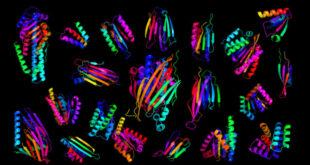Before the age of 2 or 3 years, the human brain grows very rapidly and, during REM sleep, is busy building and strengthening synapses. After 2 or 3 years, however, sleep’s primary purpose switches from brain building to brain maintenance and repair, a role it maintains for the rest of our lives, according to new research led by the University of California, Los Angeles.

Cao et al show that differences in sleep across phylogeny and during late ontogeny (after 2 or 3 years in humans) are primarily due to sleep functioning for repair or clearance, while changes in sleep during early ontogeny (before 2 or 3 years) primarily support neural reorganization and learning. Image credit: Sweet Briar College.
All animals naturally experience a certain amount of neurological damage during waking hours, and the resulting debris, including damaged genes and proteins within neurons, can build up and cause brain disease.
Sleep helps repair this damage and clear the debris — essentially decluttering the brain and taking out the trash that can lead to serious illness.
“Nearly all of this brain repair occurs during sleep,” said study senior author Professor Van Savage, a researcher in the Departments of Computational Medicine and Ecology and Evolutionary Biology at the University of California, Los Angeles, and Santa Fe Institute.
“I was shocked how huge a change this is over a short period of time, and that this switch occurs when we’re so young. It’s a transition that is analogous to when water freezes to ice.”
Professor Savage and colleagues from the University of Texas at Austin, the University of Minnesota, Santa Fe Institute, Imperial College London, and the University of California, Los Angeles conducted the most comprehensive statistical analysis of sleep to date, using data from more than 60 sleep studies involving humans and other mammals.
The scientists examined data on sleep throughout development — including total sleep time, REM sleep time, brain size and body size — and built and tested a mathematical model to explain how sleep changes with brain and body size.
The data were remarkably consistent: all species experienced a dramatic decline in REM sleep when they reached the human developmental equivalent of about 2.5 years of age.
The fraction of time spent in REM sleep before and after that point was roughly the same, whether the researchers studied rabbits, rats, pigs or humans.
The authors found that REM sleep decreases with the growth in brain size throughout development.
While newborns spend about 50% of their sleep time in REM sleep, that falls to about 25% by the age of 10 and continues to decrease with age.
Adults older than 50 spend approximately 15% of their time asleep in REM.
“The significant dropoff in REM sleep at about 2.5 years happens just as the major change in the function of sleep occurs,” said study co-author Professor Gina Poe, a researcher in the Department of Integrative Biology and Physiology at the University of California, Los Angeles.
“For most adults, a regular 7.5 hours of sleep a night is normal — and time lying awake doesn’t count,” she said.
“While children need more sleep, babies need much more, roughly twice as much as adults.”
“The large percentage of REM sleep in babies is in stark contrast to the amount of REM sleep observed in adult mammals across an enormous range of brain sizes and body sizes.”
“Adult humans have five REM cycles during a full night of sleep and can have a few dreams in each cycle.”
“A good night’s sleep is excellent medicine. And it’s free,” she added.
The results were published in the September 18, 2020 issue of the journal Science Advances.
_____
Junyu Cao et al. 2020. Unraveling why we sleep: Quantitative analysis reveals abrupt transition from neural reorganization to repair in early development. Science Advances 6 (38): eaba0398; doi: 10.1126/sciadv.aba0398
 #Bizwhiznetwork.com Innovation ΛI |Technology News
#Bizwhiznetwork.com Innovation ΛI |Technology News



